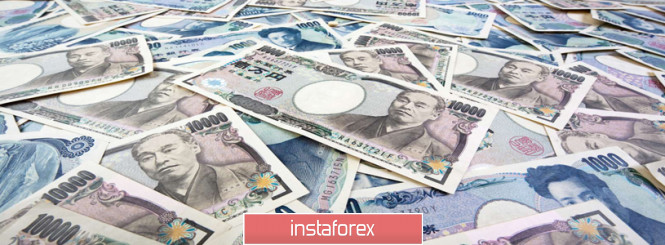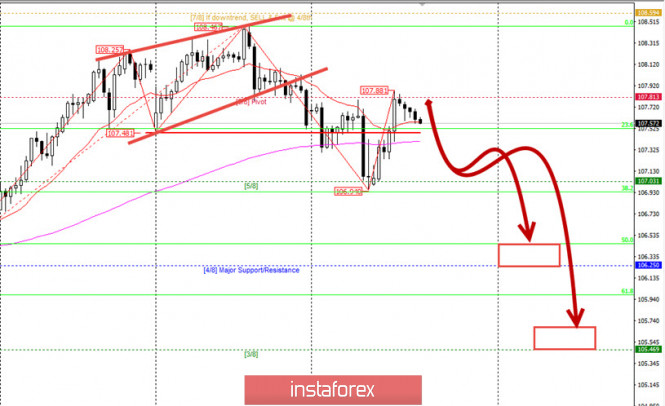Stock markets and stock index futures are one of the most liquid instruments that play one of the key roles in the monetary policy of the US Federal Reserve. Despite the fact that in Europe and in other countries they do not have the functions that are inherent in the United States, their impact on the global financial system is difficult to overestimate. Traders often underestimate the factor of stock markets or evaluate incorrectly. Therefore, today, we will try to understand how the stock markets influence the quotes and other assets, and also try to apply the direction of the movement of stock indices in the analysis of the situation on the foreign exchange market, especially since there are CFD contracts for these instruments in the terminals.
First of all, it should be noted that there are no simple correlations between the stock market and the Forex market, or at least I could not find them, although I searched quite carefully. From my point of view, the US dollar, euro and British pound exchange rates do not depend on the direction of movement of stock indices. The only currency that is influenced by the dynamics of the funds is the Japanese yen, and very often the yen acts as a leading indicator for stock indices, and vice versa.

This is due to the fact that for more than twenty years, the Japanese yen has the status of a funding currency, i.e. currency in which banks receive financing at minimum rates and in large volumes. Following that, the funds received in yen are sent to currency arbitrage operations, also known as carry trade.
According to the principles of arbitration operations, a low-yield currency is exchanged for a high-yield currency, after which it is invested in instruments denominated in a higher-yield currency. For example, in the USD/JPY pair, the dollar has a yield of 2%, and the yen has 0%, which allows you to borrow in yen and invest in dollars. At the same time, by making such an operation, investors acquire an undesirable short position in the yen and expose themselves to the risk of losses from a sharp difference in exchange rates.
As stock markets grow, investors do not have problems refinancing arbitrage operations. However, with a decrease in stock indices, traders are forced to buy the yen and return the financing received in it, which causes an increase in the Japanese currency and a decrease in the quotes of the USD/JPY pair.
If we consider the situation in a broader aspect, then with a decrease in the American stock market, the yen and the American dollar will increase in price. However, the dollar is not so simple as it was recently. The fact is that the European Central Bank has been issuing the euro at an almost zero rate since 2015, and this blurs out the current picture due to the influx of European currency into the American market, in which institutional investors are funded. Therefore, the US dollar will definitely grow to say that with a decrease in the stock market, as it could be done some time ago, is now impossible, but with respect to the yen - it is possible.
So what about the yen? Let's look at what happens to the Japanese currency for a period of up to one month, using the four-hour time period (Fig.one).

Fig.1: USDJPY pair decline options
Since May 2019, the USD/JPY rate has been in a declining trend, which is only a couple of times interrupted by consolidations and corrections. The downward trend of USD/JPY tells us that investors do not really believe in the growth of the stock market. The last corrective recovery from 104.50 to 108.50 (hereinafter I round off the values) arose at the end of August and lasted four weeks. After which, having formed a "wedge" pattern on the correctional top at the end of last and the beginning of the current week, the USD/JPY pair declined to the level of 107, however, failed to pass it and returned to the value of 107.90 again. At the same time, a decrease in USD/JPY violated the key minimum of 107.50, which serves as a formal sign of the end of the correction and the beginning of a reversal in the direction of the medium-term trend aimed at lowering.
I draw the attention of traders to the fact that the USD/JPY rate in its current direction almost completely copies the movement of the S & P500 index for four hours, as you can see for yourself by looking at the terminal trading instrument SPX500. Moreover, the SPX H4 also formally shows signs of a trend reversal, due to the breaking of the key low at 2980. Thus, through the analysis of the yen and S&P, we came to the postulate of the Dow theory: "Indexes must confirm each other." In our case, this postulate will sound like this: "The movement of US stock indexes and the USDJPY pair should go in the same direction."
In conclusion, I would like to dwell on the fundamental situation prevailing in the USA related to the Fed decision at a key rate. The main problem that the American economy is now facing is the lack of capital investments, which, in turn, is caused by a decline in international business activity. At the same time, within the Committee on Open Markets, according to the data published by the Fed, there is no understanding of the need for another rate reduction, and it is assumed that the key rate should remain at current values (Fig.2). Moreover, members of the Committee suggest that the federal funds rate will remain in the range of 1.75-2.00 until the end of next year.

Fig.2: Fed forecast on the economic situation. September 2019
Moreover, according to the CME exchange, 53% of traders now believe that the rate will be lowered again in October, and 73% consider it possible to lower the rate at the December meeting. The Fed once yielded to the desire of the markets and lowered the rate in July, although it had no formal reason to do so. Thus, whether the Committee will go about markets again remains a big question. The pressure exerted on the Fed in June-July was unprecedented, but now, there is no such pressure.
Against the background of the continuation of trade negotiations between the US and China, we can expect continued gradual, creeping growth in stock markets. The volatility of which decreased markedly in September. However, the future is in a thick fog of uncertainty, and in this regard, monitoring related assets, such as the yen and stock indexes, is becoming more relevant than ever.
The material has been provided by InstaForex Company - www.instaforex.com